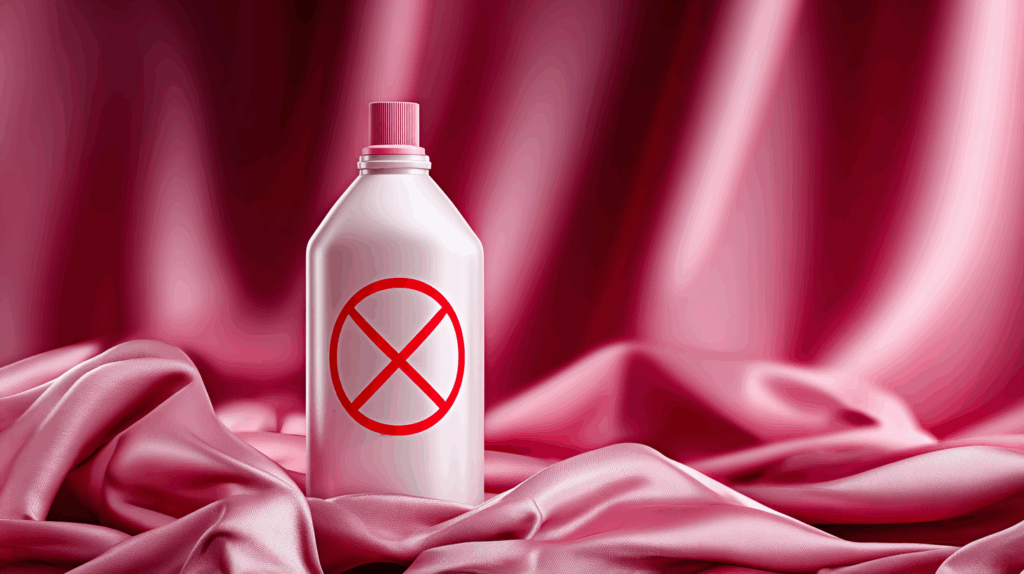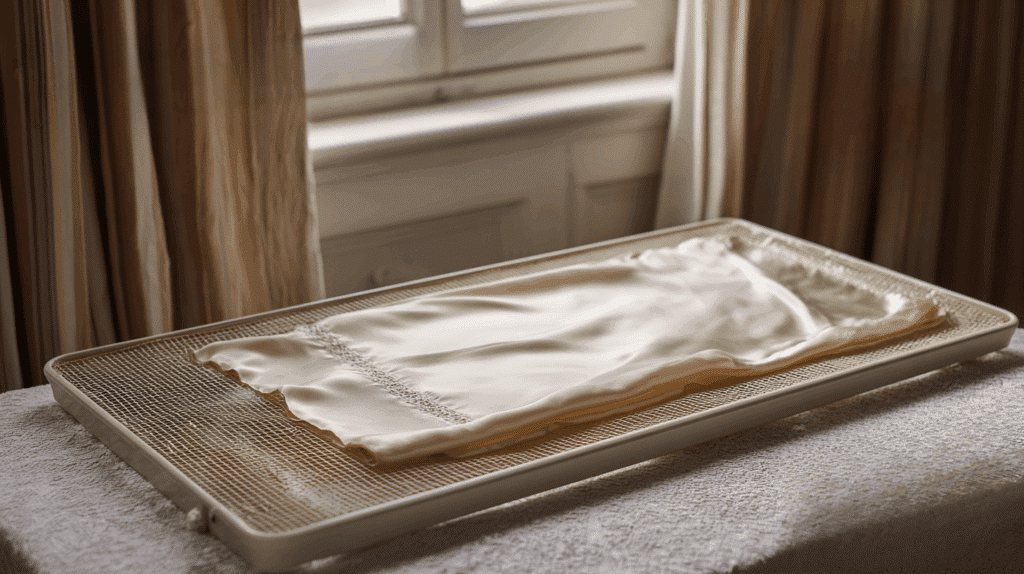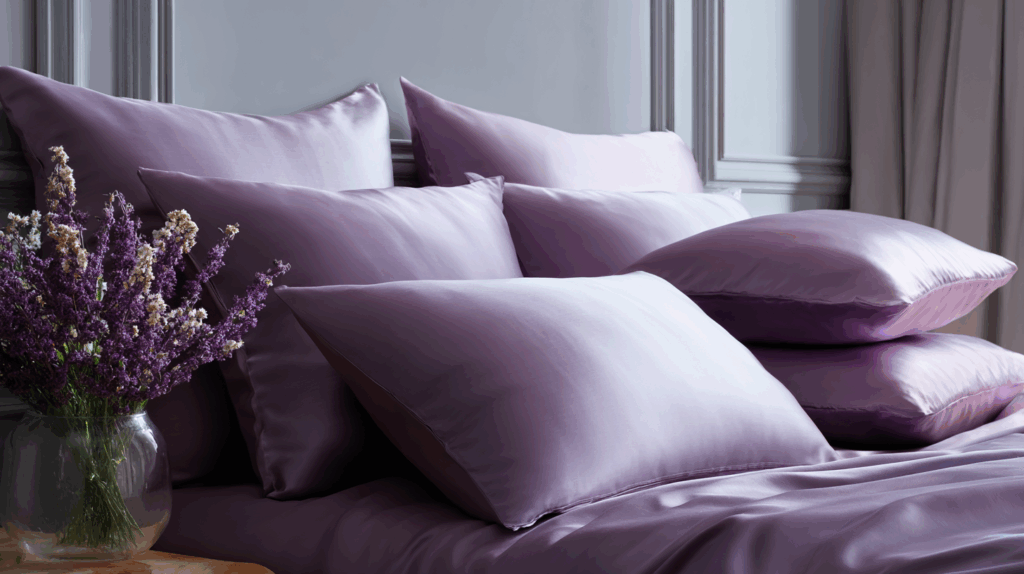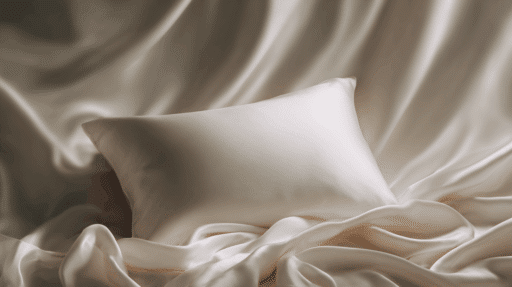When it comes to luxurious fabrics, mulberry silk is truly exceptional and stands out from the rest.
People have loved this amazing material for hundreds of years because it’s incredibly soft to the touch, allows your skin to breathe easily, and won’t cause allergic reactions like some other fabrics might.
Suppose you are considering purchasing silk sheets for your bed, silk clothing, or silk accessories, such as scarves. In that case, it’s essential to understand the origins of this fabric, its benefits for you, and the proper care and maintenance required.
This complete blog will teach you everything you need to know about what mulberry silk is in simple, easy-to-understand terms.
What is Mulberry Silk And Its Origin?
Mulberry silk originates from a unique type of silkworm known as Bombyx mori. When these silkworms eat only the finest mulberry leaves, they produce the highest quality silk possible.
Silkworms produce stronger, smoother silk that is more consistent in color and texture compared to other types of silk.
Farmers carefully grow mulberry trees and feed the fresh leaves to the silkworms every day.
After about a month of eating these leaves, the silkworms spin themselves into cocoons using one long, continuous silk thread. This single thread can be up to 1,000 meters long.
The farmers then carefully unwind these cocoons to collect the silk thread, which is later woven into the beautiful fabric we know as mulberry silk.
The Science Behind Mulberry Silk’s Delicate Nature
This section explains why mulberry silk requires special care by examining its unique protein-based structure, which makes it both luxurious and fragile.
Delicate Protein-Based Fiber Structure
- Natural protein composition: Mulberry silk is made of natural protein fibers, just like your hair and skin, which makes it gentle but also fragile
- Similar to caring for hair: Think of silk care as caring for fine, delicate hair – it requires gentle treatment and specialized products.
- Fiber breakdown risk: Harsh treatment can break down these protein fibers permanently, causing the silk to lose its softness and strength
- Molecular structure: The protein chains that make silk strong and smooth can be damaged by rough handling or wrong cleaning methods.
Sensitivity to Heat, Sunlight, and Harsh Detergents
- Hot water damage: Hot water can cause silk fibers to shrink, resulting in a loss of their natural stretch and softness.
- Color fading: Direct sunlight can cause silk colors to fade much faster than those of other fabrics, especially bright or dark colors.
- Chemical breakdown: Regular laundry detergents contain enzymes and chemicals that are too strong for delicate silk proteins.
Proper Mulberry Silk Maintenance
This guide covers four essential silk care steps: gentle washing with a proper detergent, avoiding harsh chemicals, air drying away from heat sources, and proper storage.
Following these simple techniques keeps your mulberry silk soft and beautiful for decades.
1. Wash Gently with a Silk-Safe Detergent

Hand Washing: Fill a basin with cool water and add silk-specific detergent. Gently swish your silk item for a few minutes without rubbing or twisting.
Think of it like washing something very precious that you don’t want to damage.
Machine Washing: If you must use a machine, choose the delicate cycle with cold water only.
Put silk items in a mesh bag to protect them, and use only silk detergent. Regular detergent is too harsh and can damage the delicate fibers.
2. Avoid Harsh Chemicals

Never use bleach on silk – it will damage the fabric thoroughly and often cause it to turn yellow.
Avoid using fabric softener, as it coats the fibers and makes silk feel less smooth. Silk is naturally soft and doesn’t need these products.
3. Air Dry Away from Direct Sunlight

After washing, gently squeeze out the water without wringing it. Lay the silk flat on a clean towel, roll it up to absorb moisture, then lay it flat to dry in a shaded area.
Never use heat or direct sunlight, as these can cause the fibers to shrink and be damaged.
4. Store Silk Properly

Store silk in a cool, dry place, away from direct sunlight. Use padded hangers for clothing or store flat with tissue paper.
Avoid rough surfaces that can snag the fabric, and never store it in plastic bags, as this traps moisture.
The Real Benefits That Make Mulberry Silk So Valuable
This section talks about the practical benefits that make mulberry silk worth your money. From fighting allergies naturally to helping your hair and skin look better.
1. Natural Allergy Protection
Mulberry silk has special proteins called fibroin that keep allergens away from your body. These natural proteins create a barrier against dust mites and other common allergens that can trigger sneezing or cause skin problems.
I find this particularly helpful for individuals with sensitive skin or respiratory issues.
2. Healthier Hair and Skin
Your hair stays smoother and your skin looks fresher when you use mulberry silk products. The 18 amino acids in silk work like natural moisturizers for your skin and hair.
Plus, silk’s antibacterial qualities mean fewer germs and dirt stick to your pillowcase while you sleep.
3. More Restful Sleep
Sleeping on mulberry silk helps you stay comfortable all night long without getting too hot or cold.
The fabric naturally adjusts to your body temperature, so you don’t wake up sweaty or shivering. I notice that people who switch to silk pillowcases often tell me they sleep much better.
4. Safe for the Planet
Mulberry silk comes from nature without any harsh chemicals or artificial materials added to it.
When you buy silk products, you’re choosing something that won’t harm the environment or expose your family to toxic substances. This makes it a smart choice for health-conscious families.
Washing Different Types of Mulberry Silk Products
Each product requires tailored care techniques, including gentle cycles, proper drying methods, and protective measures, to maintain the silk’s luxurious feel and extend its lifespan.
Mulberry Silk Comforters

Wash silk comforters using a gentle rinse cycle with cold water and silk detergent only. Machine dry on delicate with low heat (80°F max) and wool dryer balls to prevent clumping, or air dry flat.
For tough stains, use professional dry cleaning. Keep fresh by airing in sunlight for 2-3 hours monthly.
Mulberry Silk Pillows

Never machine-wash silk pillows. Spot clean only using cool water mixed with a teaspoon of dish soap, blotting gently with a paper towel.
For severe stains, take them to a professional dry cleaner. Use pillow protectors to prevent stains.
Mulberry Silk Scarves

Hand-wash silk scarves in cool water with silk detergent, gently swishing without wringing or twisting. Roll in a clean towel to remove excess water, then lay flat to air dry away from direct sunlight.
Mulberry Silk vs. Different Types of Silk
Understanding the differences between what is mulberry silk and other silk varieties helps you make informed decisions about which type best suits your needs and budget.
| Silk Type | Source | Fiber Quality | Cost | Best For |
|---|---|---|---|---|
| Mulberry Silk | Domesticated Bombyx mori silkworms | Longest, smoothest, most uniform fibers | Highest | Premium bedding, luxury clothing, sensitive skin |
| Tussah Silk | Wild silkworms on oak trees | Shorter, coarser fibers with natural color variations | Medium | Casual clothing, textured fabrics, rustic applications |
| Eri Silk | Eri silkworms on castor plants | Soft but shorter fibers, less lustrous | Lower | Everyday clothing, thermal wear, budget-friendly options |
| Muga Silk | Wild Antheraea assamensis silkworms | Golden color, intense but irregular fibers | High | Traditional garments, specialty items, and cultural significance |
| Spider Silk | Laboratory-produced from spiders | Powerful but limited availability | Very High | Research, specialty applications, and future innovations |
While other silk types have their place in the market, mulberry silk remains the gold standard for luxury applications due to its superior fiber quality, consistency, and performance.
Longevity Tips for Mulberry Silk
These essential longevity tips help extend the lifespan of your mulberry silk to 10-15 years or more by adopting smart washing habits, utilizing proper drying techniques, and practicing careful storage.
- Silk naturally resists odors and bacteria better than cotton or synthetic fabrics.
- Spot clean minor stains rather than doing full washes.
- Less frequent washing reduces wear and tear on delicate fibers.
- Always air-dry silk instead of using a machine dryer.
- Eliminates the risk of overheating that can cause permanent damage to silk.
- Store silk in cool, dry places away from direct sunlight.
Final Thoughts
Now, we have the centuries-old appeal of mulberry silk, from the Bombyx mori silkworms that produce the world’s finest fibers to its protein-based structure, which offers unmatched softness, hypoallergenic benefits, and natural temperature regulation.
Learn why silk requires special care due to its sensitivity to heat and chemicals, plus practical techniques for extending its lifespan to 10-15 years.
From gentle washing methods to proper storage, find out how different silk products need tailored approaches to maintain their luxury feel and functionality.
Don’t let improper care ruin your silk investment – master these proven maintenance techniques now and protect your luxurious pieces for decades of premium comfort.








